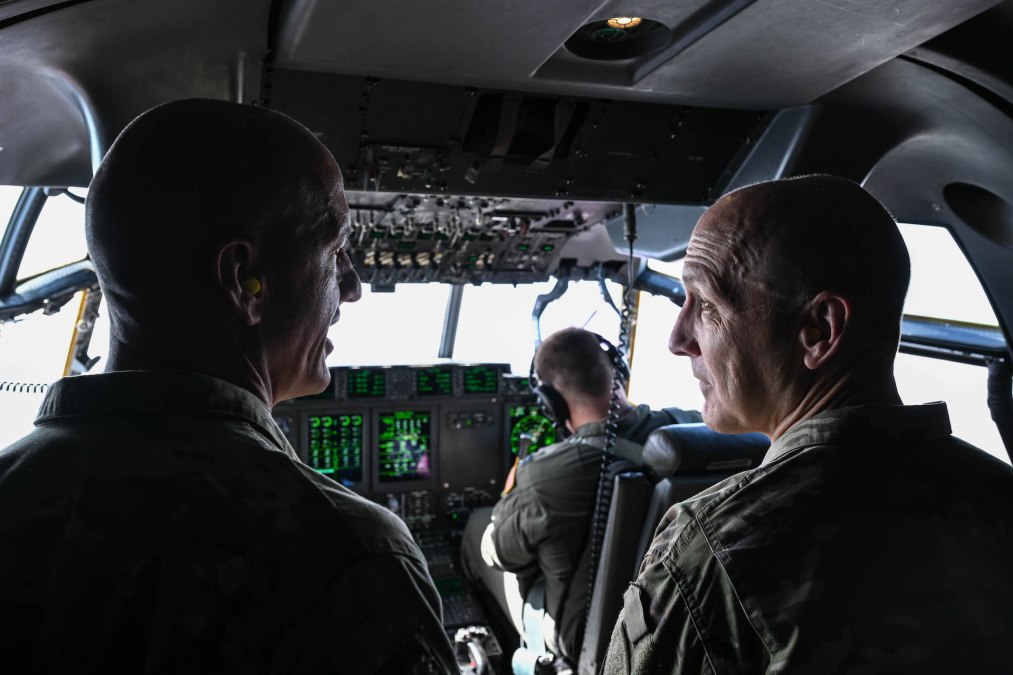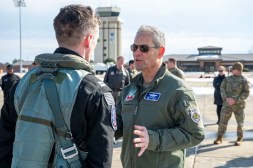Allvin: AI adoption within the Air Force currently a ‘mixed bag’

Despite progress made in integrating artificial intelligence capabilities into the Air Force’s operations, bureaucratic roadblocks are still preventing the service from fully harnessing the technology, according to the organization’s top officer.
“Right now, [AI adoption] is a mixed bag. I think it’s not for lack of effort, but I think there are some institutional pieces there,” Air Force Chief of Staff Gen. David Allvin said Monday at the AI+ Expo hosted by the Special Competitive Studies Project. “We are understanding the value of it, but assimilating it into our institution is one I think we still have some work to do on.”
There are a number of ongoing efforts to harness AI and autonomous capabilities across the department, including development of loyal wingman drones known as Collaborative Combat Aircraft (CCA), integrating AI into its pilot test schools and experimentation with large language models for administrative support. Allvin also highlighted budding partnerships the service has with academic institutions — such as the DAF-MIT AI Accelerator and Stanford AI Studio — as beneficial to the service’s overall adoption of the tech.
But much like the rest of the Pentagon, the Air Force is encumbered by legacy bureaucratic processes that are unable to keep up with rapid advancements in AI capabilities. As a result, officials are working to find existing technologies, understand the best ways to leverage them and prove their value for the Air Force in order to move forward, Allvin said.
“Sometimes it’s hard for the institution to adapt, so we need to grab onto something and, even though there might be something better coming along in the future, we need to have the institution go, ‘Wow, that’s pretty important, that helps me make decisions better, that helps me do predictive maintenance better,’” he said. “And then, that helps us to really assimilate and be able to jump on the train.”
Allvin noted that one key initiative doing a lot of that legwork is the service’s CCA program, which has been divided into three separate parts. General Atomics and Anduril are currently developing their respective platforms, at least one of which will be chosen as the first CCA drone under Increment 1. At the same time, the Air Force’s Project Venom is testing much of the autonomous flight technology for air-to-air combat that will likely be used by the next-generation drones. Meanwhile, the service’s experimental operations unit at Nellis Air Force Base in Nevada is exploring operational concepts for the CCA platforms.
“We have to keep our imaginations wide open to understand this is a game-changing technology that can really shift [and] go to the next level when it comes to air dominance, but we can only do that if we don’t sort of get trapped by the vestiges of the past,” Allvin said.






